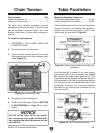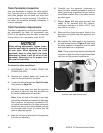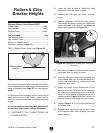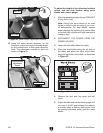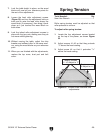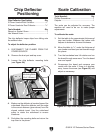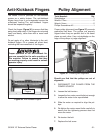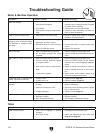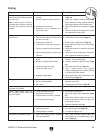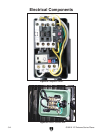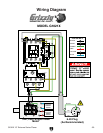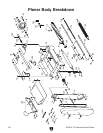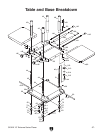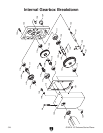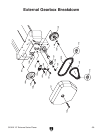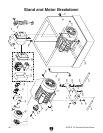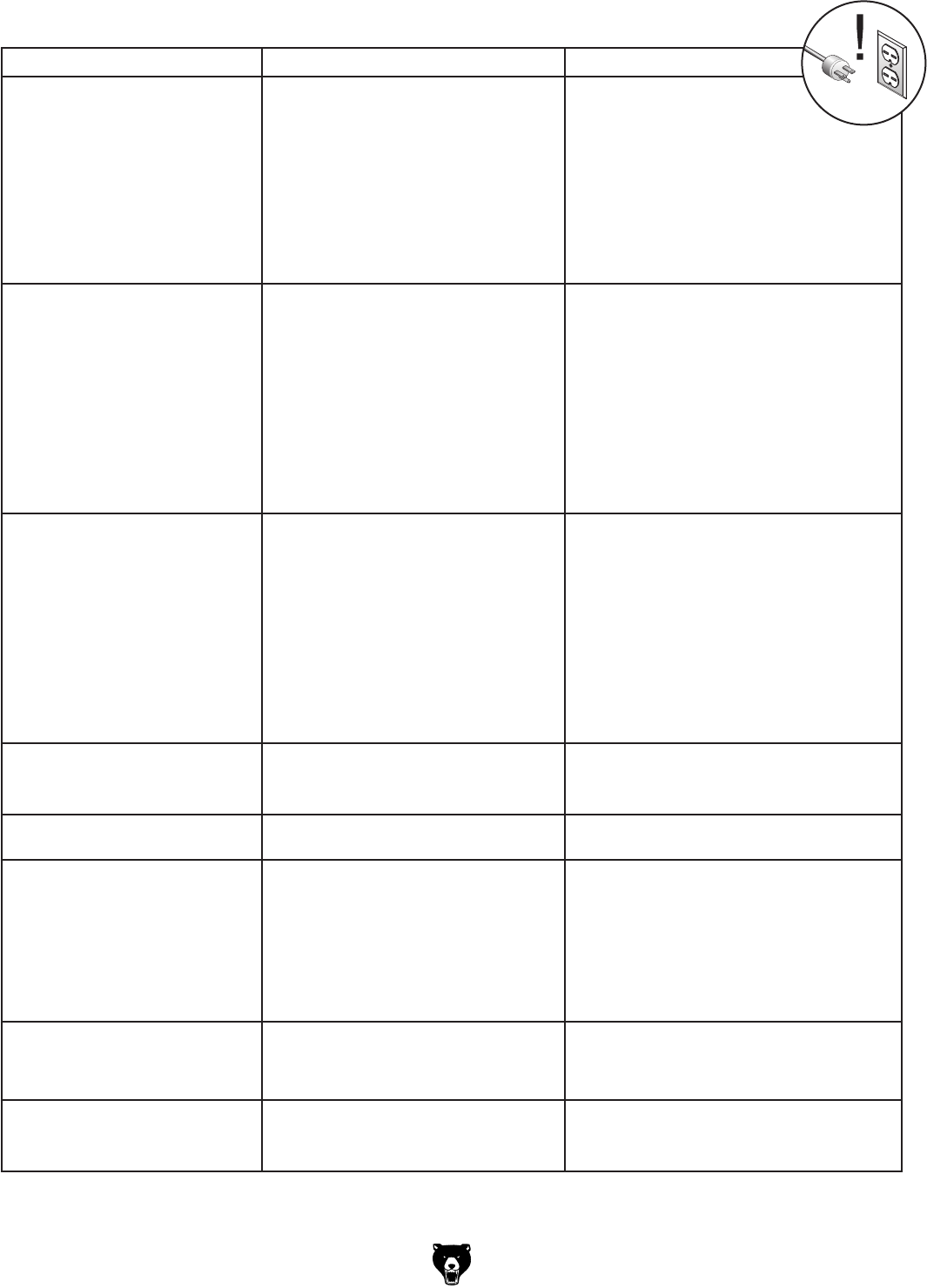
G1021X 15" Extreme Series Planer
-33-
Symptom Possible Cause Possible Solution
Excessive snipe (gouge in the end
of the board that is uneven with the
rest of the cut).
Note
: A small amount of snipe is
inevitable with all types of planers.
The key is minimizing it as much as
possible.
1. One or both of the bed rollers are set
too high.
2. Outfeed extension table set too low.
3. Chipbreaker set too low.
4. Workpiece is not supported as it
leaves the planer.
1. Lower the bed rollers
(
Page 19).
2. Raise the outfeed extension table (
Page
14); sometimes raising outfeed extension
table slightly higher than the table helps.
3. Raise the height of the chipbreaker (
Page
27).
4. Hold the workpiece up slightly as it leaves
the outfeed end of the planer.
Workpiece stops/slows in the mid
-
dle of the cut.
1. Taking too heavy of a cut.
2. One or both of the bed rollers are set
too low or too high.
3. Chipbreaker set too low.
4. Feed rollers set too low or too high.
5. Table not parallel with head casting.
6. Pitch and glue build up on planer com
-
ponents.
1. Take a lighter cut.
2. Lower/raise the bed rollers (
Page 19).
3. Raise height of chipbreaker (
Page 27).
4. Adjust the feed rollers to the correct height
(Page 27)
5. Adjust the table so it is parallel to the head
casting.
6. Clean the internal cutterhead components
with a pitch/resin dissolving solvent.
Chipping (consistent pattern). 1. Knots or conflicting grain direction in
wood.
2. Nicked or chipped carbide cutter.
3. Feeding workpiece too fast.
4. Taking too deep of a cut.
5. Misaligned chipbreaker.
1. Inspect workpiece for knots and grain
direction; only use clean stock.
2. Rotate or replace the affected cutter (
Page
24).
3. Slow down the feed rate (
Page 18).
4. Take a smaller depth of cut. (Always
reduce cutting depth when surface planing
or working with hard woods.)
5. Adjust both sides of the chipbreaker to the
correct height (
Page 27).
Fuzzy grain. 1. Wood may have high moisture con
-
tent or surface wetness.
2. Dull cutters.
1. Check moisture content and allow to dry if
moisture is too high.
2. Rotate/replace the cutters (
Page 24).
Long lines or ridges that run along
the length of the board
1. Nicked or chipped cutter(s). 1. Rotate/replace the cutters (
Page 24).
Uneven cutter marks, wavy sur
-
face, or chatter marks across the
face of the board.
1. Feeding workpiece too fast.
2. Chipbreaker set unevenly.
3. Carbide cutters not evenly installed.
4. Worn cutterhead bearings.
1. Slow down the feed rate.
2. Adjust the height of the chipbreaker (
Page
27).
3. Make sure carbide cutters do not have
debris under them; make sure cutters are
torqued down evenly.
4. Replace cutterhead bearings.
Glossy surface. 1. Carbide cutters are dull.
2. Feed rate too slow.
3. Cutting depth too shallow.
1. Rotate/replace the cutters (
Page 24).
2. Increase the feed rate (
Page 18).
3. Increase the depth of cut.
Chip Marks (inconsistent pattern). 1. Chips aren't being properly expelled
from the cutterhead.
1. Use a dust collection system; adjust the
chip deflector in or out depending on your
setup (
Page 30).
Cutting



